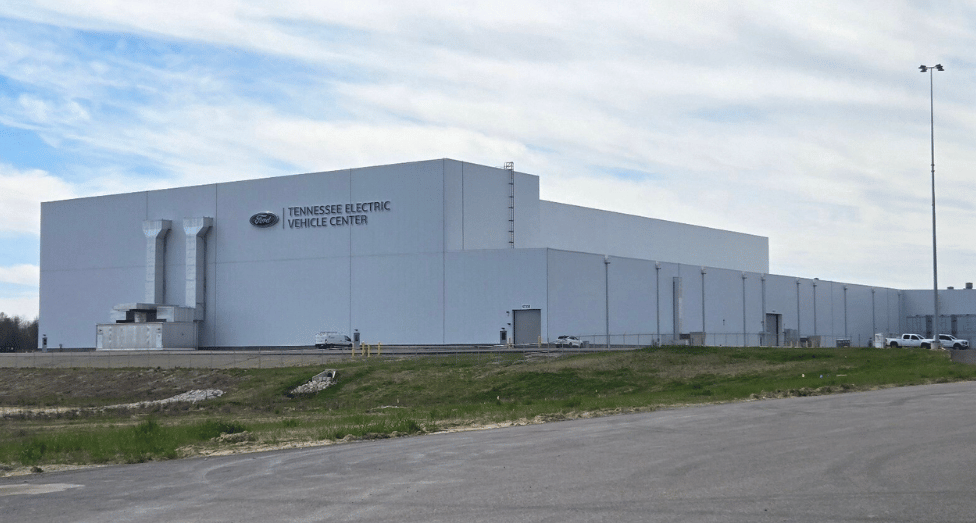Ford’s $30,000 Electric Truck Could Shake Up the EV Game
Ford just dropped a bombshell that has the auto world buzzing. The company announced they’re building a midsize electric pickup truck that will start around $30,000 and hit showrooms by 2027. What makes this different from every other EV promise? Ford is completely ripping up the playbook on how cars get made, calling it their biggest manufacturing change since the Model T rolled off the line over a century ago.
- Game-changing price point: A $30,000 electric truck would undercut competitors by $20,000 or more, making EVs accessible to regular truck buyers for the first time
- Revolutionary manufacturing: Ford is ditching the traditional assembly line for an “assembly tree” system that builds vehicles 40% faster with fewer workers
- Built in America: The $5 billion investment creates 4,000 jobs in Kentucky and Michigan, keeping production domestic instead of outsourcing overseas
Why This EV Truck Changes Everything
Let’s be honest about the current electric truck market. The cheapest options start around $50,000, with most pushing $70,000 or more. That’s left a massive gap between what people want to pay and what’s actually available. Ford’s betting big that a $30,000 electric truck will fill that void.
The truck itself sounds pretty impressive on paper. Ford says it’ll be roughly the size of their current Maverick but with more interior space than a Toyota RAV4. You get four doors, a truck bed, a frunk up front, and performance that matches a Mustang EcoBoost – which means zero to sixty in under five seconds. Not bad for thirty grand.
What really catches my attention is the range of features they’re promising. We’re talking fast charging, enough battery to power your house for six days, and over-the-air updates that keep improving the truck after you buy it. Ford’s CEO Jim Farley put it bluntly: “You don’t need a generator; you just buy this truck.”
The EV Manufacturing Revolution Nobody Saw Coming
Here’s where things get really interesting. Ford isn’t just building another truck – they’re completely reimagining how vehicles get assembled. Their new “assembly tree” throws out Henry Ford’s century-old moving assembly line concept.
Instead of one long conveyor belt where workers add pieces as the car moves along, Ford’s splitting everything into three parallel branches. The front end gets built on one line, the rear on another, and the battery pack with interior pieces on a third. All three come together at the end like branches joining a tree trunk.
The numbers tell the story. Ford claims this system uses 20% fewer parts, 25% fewer fasteners, and cuts over 4,000 feet of wiring compared to their current electric Ford cars. That’s more than three-quarters of a mile of wiring eliminated from each vehicle. Workers won’t have to twist and reach as much, and the whole process should be 40% faster.
This isn’t just about speed. It’s about making EVs profitable at lower prices. Doug Field, Ford’s chief EV officer, explained that their California-based “skunkworks” team spent years figuring out how to build quality vehicles for less money without sacrificing what customers actually want.
Taking On China (And Everyone Else)
Ford’s move comes at a time when Chinese automakers like BYD are eating everyone’s lunch with affordable electric vehicles. Farley has been vocal about this threat, even driving a Chinese electric SUV for months because he was so impressed with it.
But instead of moving production overseas for cheaper labor, Ford’s doubling down on American manufacturing. The company is investing $2 billion to retool their Louisville Assembly Plant in Kentucky and another $3 billion in their Michigan battery facility. That’s 4,000 jobs that could have easily gone to South Korea or Japan.
“What our competitors do, they build their affordable vehicles in South Korea, Japan, and they import. But not us,” Farley said. “At Ford, we made a big bet on our country.”
The timing couldn’t be better. With current electric vehicle sales growth slowing and many people still hesitant about electric vehicles, an affordable truck that delivers real value could be exactly what the market needs.

The Platform That Could Spawn Everything
The $30,000 truck is just the beginning. Ford’s new Universal EV Platform can supposedly support trucks, SUVs, crossovers, and even vans. Internal graphics show seven different body styles that could use the same underlying architecture.
Think about what this means. If Ford can nail the fundamentals of reliable batteries, simple software, and efficient manufacturing, they could roll out an entire lineup of affordable EVs faster than anyone expects. A $25,000 crossover SUV? A $35,000 cargo van for small businesses? Suddenly possible.
The platform uses cheaper lithium iron phosphate batteries that also happen to be lighter and more compact. These batteries form the structural floor of the vehicle, which simplifies design and cuts costs even more.
Reality Check: Can Ford Actually Pull This Off?
Ford’s made big promises before that didn’t always pan out. Remember when they said they’d have Level 4 self-driving cars by 2021? Yeah, that didn’t happen.
This time feels different though. The company has already delayed other electric projects to focus on affordability. They pushed back the next F-150 Lightning and their electric van to 2028, specifically to get this midsize truck right.
The Louisville plant is shutting down production of the Ford Escape and Lincoln Corsair after 2026 to make room for the truck. That’s not the kind of move you make unless you’re serious about following through.
Ford’s also assembling a team of over 500 engineers at their new Long Beach development center, many poached from Tesla, Rivian, and Lucid. These aren’t just traditional auto engineers. They’re people who’ve actually built successful electric vehicles before.
What This Means for Everyone Else
If Ford pulls this off, it puts massive pressure on every other automaker. Tesla’s cheapest vehicle starts around $40,000. GM’s electric trucks are pushing $60,000. Suddenly Ford would have a huge price advantage in the most popular vehicle segment in America.
The ripple effects could be huge. Other manufacturers would have to slash prices, which means either cutting features or finding their own ways to reduce costs. Some might not survive that kind of price war.
For truck buyers, this could be the moment electric finally makes financial sense. A $30,000 electric truck that can power your house and costs pennies per mile to operate? That’s compelling even for people who weren’t considering an EV.
The Bottom Line for EV Truck Buyers
Ford’s $30,000 electric truck isn’t just another vehicle announcement. It’s a potential industry reset. By completely rethinking both the product and how it gets made, Ford might have found the formula that brings electric vehicles to the masses.
Will it work? We won’t know until 2027 when the first trucks roll out of Louisville. But if Ford delivers on their promises, this could be the vehicle that finally makes electric trucks mainstream. That would be a genuine “Model T moment” for the modern era.
The question isn’t whether Ford can build a $30,000 electric truck. It’s whether they can build one that people actually want to buy. Based on what they’re promising, it sounds like they just might pull it off.

